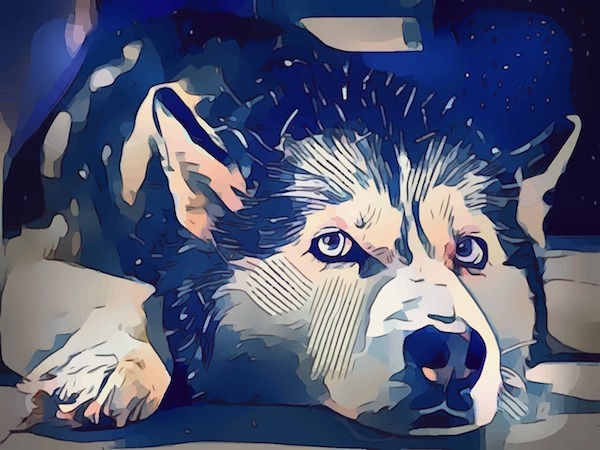
The Alaskan Malamute is not a sled dog as so many “laymen” think, but is, in fact, a sledge dog that was used for heavy freighting in the Arctic. As such, the breed is built for strength and endurance, and of paramount importance is the dog’s feet. While hound fanciers refer to this aspect of their breeds as “running gear,” the Malamute foot is equally specialized, but if readers of the breed’s standard only get as far as the General Appearance, they may fail to understand how significantly more important these four knobs are beyond the simple mention of “good feet.”
If the Yeti was a canine (and not a, um, ……primate????) he would be a Malamute because this breed could rightfully be nicknamed, “Bigfoot.” He has large feet, and how this helps is that such feet have a lower surface area to volume ratio than smaller feet, so the paws radiate less body heat per unit of mass and stay warmer in the cold. Because a Nordic breed’s veins and arteries run very close to one another in the foot, essentially creating an intricate heat transfer system from warm arterial blood to cold venous blood, a larger foot helps.
Splayed feet don’t count because such a fault is the kiss of death in a breed that bears down on its paws for traction and push/pull. Toes far apart married to thin, flat pads not only fail to give inadequate support, they are painful. Add to this frigid, Arctic conditions, and a Malamute with bad feet wouldn’t last, let alone be tolerated. The toes have to be well knit (tight) and highly muscled, the foot well-arched, and the pads thickly cushioned and tough because this breed uses them! Check out the video we found as an illustration of what a Malamute did historically:
Hair also grows between the toes to offer protective insulation, and they add to the snowshoe effect of the feet. This isn’t our choice of words, it appears in the standard: “The feet are of the snowshoe type, tight and deep, with well- cushioned pads, giving a firm, compact appearance.” Snowshoe feet give the Malamute the effect of “flotation,” which simply means his weight is evenly distributed.
Anything less than a sound foot is considered a serious fault because as the expression goes, the Alaskan Malamute is “built from the ground up.”
Image: Alaskan Malamute: Pixabay
